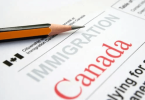Advertisements
Canada is one of the most popular destinations for international students who want to pursue higher education abroad. With its world-class universities, multicultural society, and natural beauty, Canada offers a great learning experience and a high quality of life.
But how do you go about studying in Canada as an international student? Here are some steps to help you plan your journey.
Step by Step Guide on How to Study in Canada 2024
These are 8 steps to follow to migrate to Canada via the study route.
Step 1: Understand the Requirements
Before you apply to Canadian universities, you must ensure you meet the basic requirements for studying in Canada. These include:
- Having a valid passport
- Having a good academic record
- Having proficiency in either English or French, depending on the language of instruction of your chosen program
- Having proof of passing a language test with minimum scores, such as IELTS, TOEFL, TEF, or TCF
- Having proof that you can afford your tuition fees and living expenses in Canada
- Having a letter of acceptance from a Designated Learning Institution (DLI), which is an accredited school that can admit foreign students
- Having a clean criminal record and good health
Step 2: Choose your Course and Institution
Canada has a wide range of educational options for international students, from certificates and diplomas to bachelor’s and master’s degrees. You can choose from more than 21,000 programs offered by over 1,000 DLIs across the country. Some of Canada’s most popular fields of study are business, engineering, computer science, health sciences, and social sciences.
To find the best course and institution for you, you can use online tools such as:
- The Government of Canada’s Study in Canada website
- The Canadian Information Centre for International Credentials (CICIC) website
- The Universities Canada website
- The Colleges and Institutes Canada website
You can also check the rankings of Canadian universities by reputable sources such as QS World University Rankings, Times Higher Education World University Rankings, and Maclean’s University Rankings.
When choosing your course and institution, you should consider factors such as:
- The admission requirements and deadlines
- The tuition fees and scholarships
- The location and campus facilities
- The accreditation and recognition of the program
- The career prospects and alums network
Step 3: Take the Language Proficiency Test
As mentioned earlier, you need to prove your language skills in either English or French to study in Canada. The language test you need to take depends on the language of instruction of your program and the requirements of your institution. Some of the most common language tests accepted by Canadian universities are:
IELTS Academic
This is an English test that assesses your listening, reading, writing, and speaking skills. The minimum score required by most Canadian universities is 6.5 out of 9.
Advertisements
TOEFL iBT
This is another English test that evaluates your abilities in four sections: reading, listening, speaking, and writing. The minimum score required by most Canadian universities is 86 out of 120.
TEF
This French test measures your comprehension and expression skills in oral and written forms. The minimum score required by most Canadian universities is B2 out of C2.
TCF
This is another French test that evaluates your level of proficiency in listening, reading, speaking, and writing. The minimum score required by most Canadian universities is B2 out of C2.
You should book your language test well and thoroughly prepare for it. You can find online resources and practice tests to help you improve your language skills.
Step 4: Apply to Universities
Once you have chosen your course and institution, you need to apply for admission. You can do this online through the university’s website or a centralized application system such as OUAC (Ontario Universities Application Centre) or Apply Alberta. You will need to submit various documents along with your application form, such as:
- Your academic transcripts and diplomas
- Your language test results
- Your letter of motivation or statement of purpose
- Your resume or curriculum vitae
- Your letters of recommendation
- Your portfolio or samples of work (if applicable)
Depending on the university, you may also need to pay an application fee, which varies from CAD 100 to CAD 250. You should apply to at least three universities to increase your chances of getting accepted. You should also apply as early as possible, preferably six to nine months before the start date of your program. You should also check the status of your application regularly and respond to any requests from the institution.
Step 5: Apply for a Study Permit
After you have received a letter of acceptance from a DLI, you can apply for a study permit, which is a document that allows you to study in Canada for more than six months. You can apply online through the Government of Canada’s website or offline through a visa application center in your country. You will need to provide several documents along with your application form, such as:
Your letter of acceptance from a DLI
- Your passport
- Your language test results
- Your proof of financial support
- Your medical exam results
- Your police clearance certificate
You may also need to pay a processing fee of CAD 150 and a biometric fee of CAD 85. You should apply for your study permit as soon as possible, preferably at least three months before the start date of your program. You should check the website of Immigration, Refugees and Citizenship Canada (IRCC) for more details.
Step 6: Travel Time
Once you have received your study permit, you are ready to travel to Canada and start your studies. You should plan your travel arrangements well and ensure you have everything you need for your journey. You should also check the COVID-19 travel restrictions and requirements that may affect your entry to Canada.
Some of the things you should do before you travel are:
Book your flight tickets and accommodation
You should look for affordable and convenient options that suit your budget and needs. You should also confirm your arrival date and time with your institution and arrange airport pick-up or transportation if possible.
Pack your luggage and documents.
You should pack essential items such as clothing, toiletries, electronics, medications, etc. You should also carry your important documents, such as your passport, letter of introduction, acceptance letter, proof of financial support, etc., in your hand luggage.
Get travel insurance.
You should get a comprehensive travel insurance policy that covers your health, belongings, and trip cancellation or interruption. You should also check if your institution offers any health insurance plans for international students and enroll in them if applicable.
Step 7: Study Time
Congratulations! You have made it to Canada and are ready to start your academic journey. You should attend the orientation sessions organized by your institution to get familiar with the campus, the faculty, the services, and the rules. You will also need to adjust to the Canadian culture, weather, and lifestyle. You can make new friends, join clubs and societies, explore the local attractions, and enjoy the diversity and beauty of Canada.
You can also work while studying in Canada if you have a valid study permit and a Social Insurance Number (SIN). You can work up to 20 hours per week during regular academic sessions and full-time during scheduled breaks. You can work on or off campus, depending on the availability of jobs and your preferences. Working while studying can help you gain valuable skills, experience, and income.
Step 8: Stay and Work in Canada after Graduation (if eligible)
If you have completed your studies in Canada and want to stay and work in the country, you may be eligible for a post-graduation work permit (PGWP). A PGWP is an open work permit that allows you to work for any employer in Canada for up to three years after graduation.
To apply for a PGWP, you will need to:
- Have completed a full-time program of at least eight months at a DLI in Canada.
- Have maintained a valid study permit throughout your studies.
- Apply within 180 days of receiving your final marks or degree confirmation.
- Pay the application fee of CAD 255 and submit supporting documents such as your passport, transcript, degree certificate, etc.
If you want to become a permanent resident of Canada after working for some time, you may be eligible for various immigration programs such as Express Entry, Provincial Nominee Program, Canadian Experience Class, etc. You should check each program’s eligibility criteria and requirements and apply accordingly.
Conclusion
We hope this guide has helped you understand how to study in Canada as an international student. If you follow these steps carefully, you will be able to achieve your academic and career goals in one of the best countries in the world. Good luck!
Advertisements






